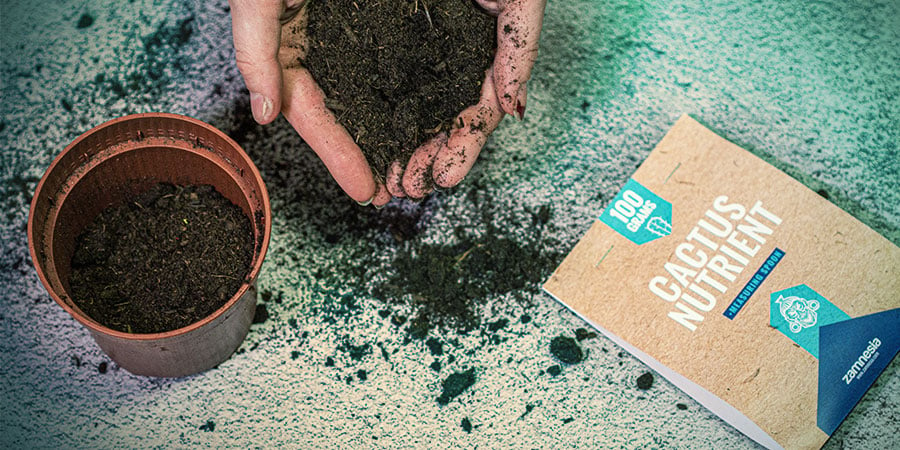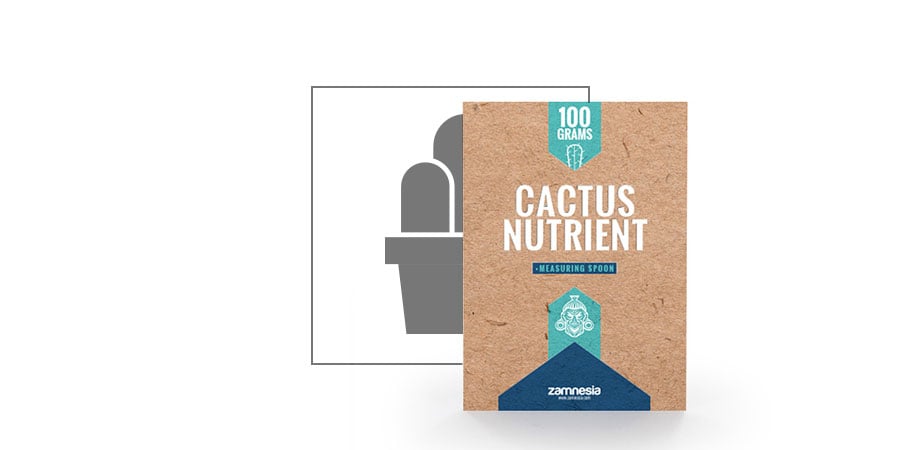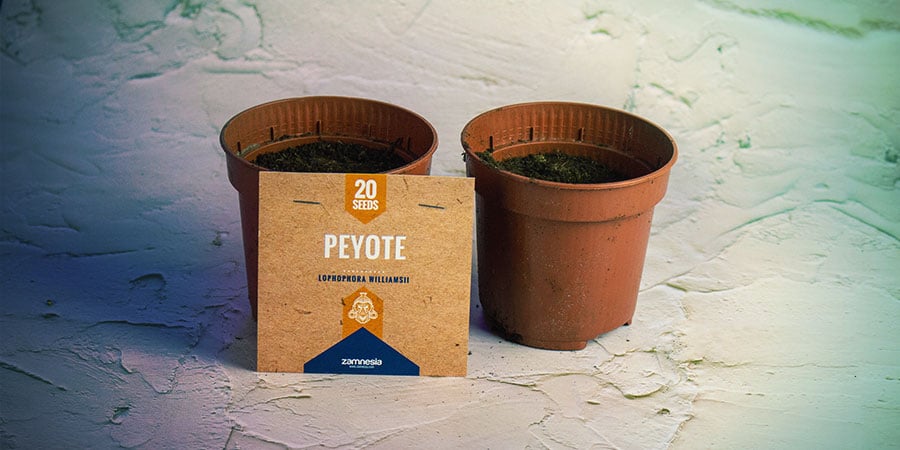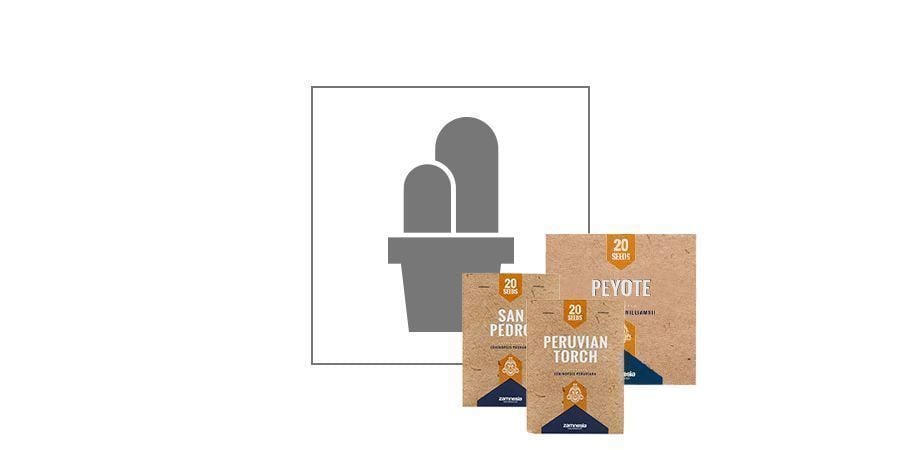How To Grow Your Own Mescaline Cactus From Seed
Mescaline is a natural psychedelic produced by several types of cactus including peyote, San Pedro, and the Peruvian torch. These cacti are easy enough to grow, even if you don't have a lot of gardening experience. It does, however, require a lot of patience.
Cacti, in general, are hardy plants that can thrive in the harshest conditions once established, but they are slow growers. If you're willing to sacrifice an entire cactus for a single trip, you could harvest at the one-year point. The better plan is to grow them for several years until they reach a considerable size, so that you can enjoy the fruits of your labour again and again without killing your plant.
Follow this simple guide to learn how to grow your own mescaline cactus from seed. We'll walk you through each step, from choosing the right soil to caring for your cacti at each stage of their life.
MATERIALS AND EQUIPMENT
- Mescaline cactus seeds
- Growing medium
- Sand or vermiculite
- Clay pots
- Cotton wool
- Water tray
- Plastic wrap or storage box with clear lid
- Muslin cloth
- Aquarium rocks
- Plastic fork
- Tweezers
CHOOSE THE RIGHT GROWING MEDIUM
Premixed cactus soil is readily available and very affordable. It's a good place to start. If you'd like to mix your own, use a simple blend of half perlite and half compost. Either will provide the combination of drainage and aeration that cacti require.
As long as you use a good-quality compost, you shouldn't need to sterilise your mix. Sterilisation uses heat and/or fungicide to purify the soil, but it also kills off most, if not all, of the beneficial bacteria and other microorganisms that would otherwise support the root system of your cacti. Keeping your substrate airy and well-drained should eliminate any problems like rot or mould and be just as effective as soil sterilisation.
When choosing the growing medium (soil or substrate), there is one major consideration: Do you want to maximise cacti growth or mescaline production? Mescaline is an alkaloid that specific types of cacti produce in response to stress. Stress can come in lots of forms, but one type is improper soil. For that reason, the type of substrate you choose can determine whether you grow big, beautiful, perfectly formed mescaline cacti, or cacti that are more potent, but less visually appealing.
However, the soil does have to be good enough at this point that the seeds will germinate and it can support the developing cacti. It's best to use a medium that's designed for optimal growth now, and introduce stress after the young plants are established.
FILL THE POTS WITH GROWING MEDIUM
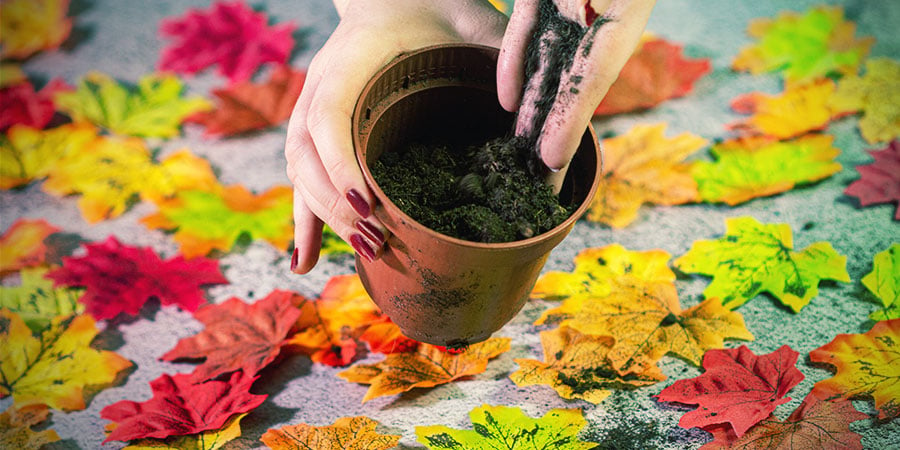
Choose shallow clay pots with drainage holes if possible. This type of material is porous and allows the soil to drain quickly to protect the roots from rot. Cover the drainage holes with a little bit of cotton wool. Pull a few cotton strands up to form wicks. By drawing water up from the bottom of the pot, you reduce the risk of overwatering or washing away the tiny cactus seeds.
Fill the pots a little more than halfway with the growing medium. Press gently to lightly compact the soil just enough so that it doesn't shift around as you move the pot. Do not tightly compress the soil.
PLANT THE MESCALINE CACTUS SEEDS
Spread the seeds lightly across the surface of the soil. If you don't have many seeds, sew them individually about 4–5cm apart. Do not push them down into the soil. The tiny cactus seeds won't have enough energy to emerge from the surface if you do. Sprinkle a little sand or vermiculite across the surface to just barely cover them.
Set the pots in a tray that's shallowly filled with water. Allow the water to wick up until the surface appears slightly damp. Immediately remove the pots from the water tray and allow them to drain.
CREATE A GREENHOUSE-LIKE GROWING ENVIRONMENT
Mescaline cactus seeds germinate best in a warm, humid environment. You can create this by either covering the individual pots with plastic wrap, or by placing all the pots into a larger storage container with a clear lid. Once covered, place them near a sunny window where they will get plenty of warmth and light. Direct light is needed for a few hours a day; the rest of the time it should be indirect or shaded.
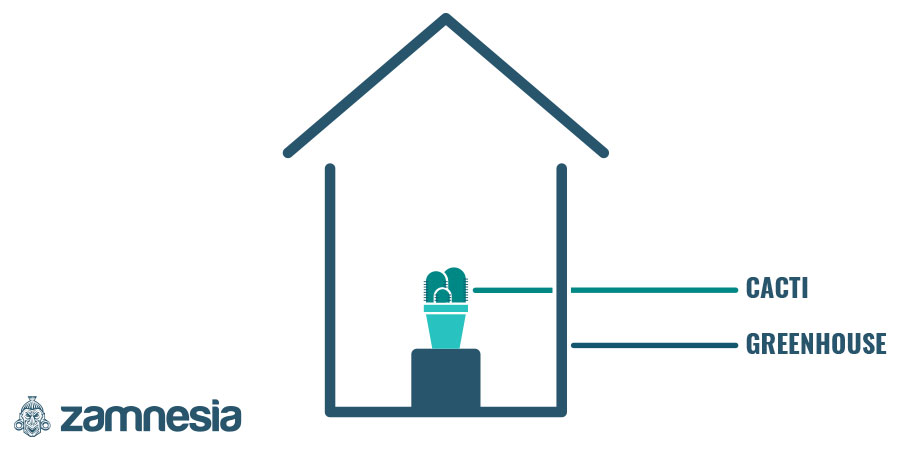
Keep the pots moist, but not wet. If you're using a larger storage container, fill the bottom with about ½ cm of tepid water. Either cold or hot water can kill the germinating seeds. Open the container once a day to let in fresh air. While it's open, wipe any condensation from the lid.
If you covered your pots with plastic wrap, place them back in the watering tray when the soil begins to look dry. You can also remove the plastic wrap and lightly mist from the top. However, watering from the bottom will result in stronger roots. Be careful at this stage to never overwater or allow the soil to dry out completely.
WATCH FOR SMALL SEEDLINGS TO APPEAR
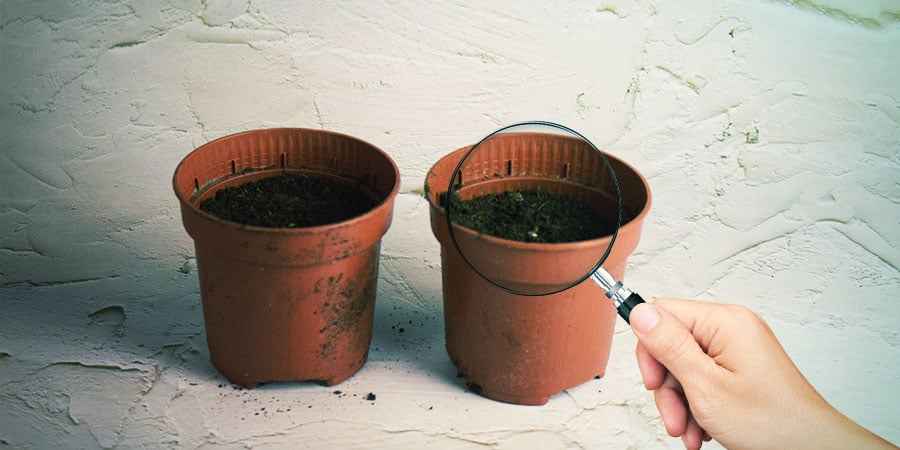
After about two weeks, small seedlings will start to emerge from the soil. You may have to look closely to see the small, light green orbs.
Let the seedlings develop for another week or two. Once they are fully established, replace the plastic wrap or top with a thin layer of muslin cloth to allow better airflow. Apply a thin layer of aquarium gravel to the surface of the soil to hold in the moisture. Continue to water from the bottom of the pots.
Baby mescaline cacti are very sensitive to light at this point. When healthy, they should be dark green. They'll turn yellow if they're not getting enough sunlight. Too much light turns them red or brown. Adjust the light as needed to keep them healthy.
TRANSPLANT AFTER A MINIMUM OF FIVE MONTHS GROWN
It'll take about five more months for the mescaline seedlings to reach a point where they can be safely transplanted into their own pots. Use a plastic fork to gently separate the roots and pry them apart before transplanting.
Assemble a collection of small pots and partially fill with growing medium. Use tweezers to gently place each cactus seedling into its own pot. Hold the seedling upright using the tweezers, then add more medium until it's secure. Water moderately from the top and add gravel to the soil's surface to preserve moisture.
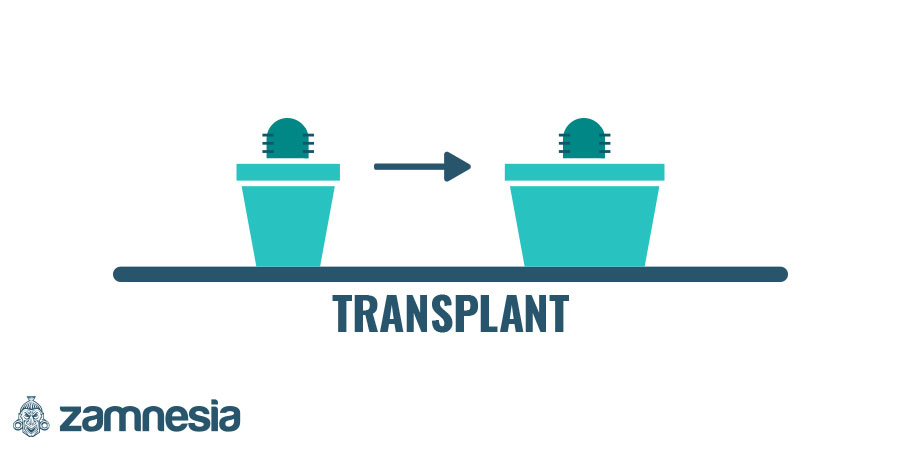
The young mescaline cactus can now be set on a sunny windowsill until it outgrows its new pot. Water sparingly when the pot feels very light. You no longer need to water from the bottom; always add water to the soil surrounding the cactus, rather than pouring water on top of the plant.
If you live in a region where cacti can be grown outside year-round, you can also transplant to a suitable spot in your yard or garden.
HOW TO CARE FOR MESCALINE CACTI
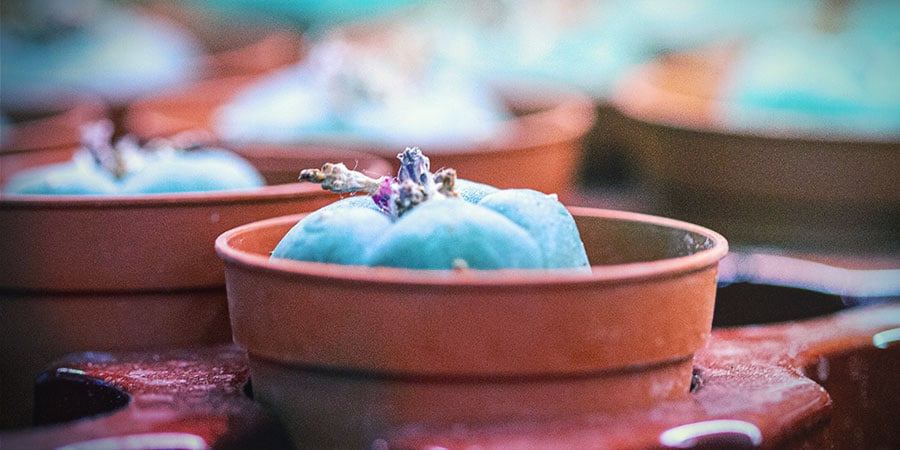
Mescaline cacti are hardy plants that can withstand a lot of neglect, but they do require a moderate amount of attention and care. Here are some things you can do to protect their health.
PROVIDE ADEQUATE LIGHTING
Once your seedlings grow into fully established transplants, provide them with at least four hours of bright, filtered daylight. However, mescaline cacti can get sunburnt under too many hours of direct sunlight. If you notice any dark or discoloured patches, move them to the shade.
When growing outdoors, plant in a sheltered area where they will receive both shade and sunlight throughout the day. Keeping them in pots is a good idea so you can move them around easily depending on the weather and other conditions.
FEED AND WATER BASED ON THEIR NEEDS
Cacti don't need as much water as most plants, but they do need some. Give them water when the soil feels dry at the surface and the pot feels light. Usually, this will be about twice a week. They may need extra water during abnormally hot or dry periods.
The organic matter in the compost you used during the germination and seedling stages should have been enough to sustain the developing cacti, but adult plants will need to be fed from time to time. Choose a fertiliser that's low in nitrogen because it can easily burn cacti; a 7-40-6 or 1-7-6 blend is good. You can either add a small amount to their water once every week or two, or you can mix a larger amount into the top of the soil every 4–6 weeks. Be careful not to over-feed.
Cacti go dormant in the cold season and won't require nearly as much feed or water as they do during the warmer growing seasons. If you plan to transplant your cacti, you should allow them to dry out for two weeks before and after the move.
KEEP YOUR CACTI WARM
Mescaline cacti like a warm environment. During the day, they should be kept at 20ºC or warmer to stay active, but they grow fastest when temps stay between 25–35ºC during the day. At night, the temperature shouldn't drop below 15ºC during the growing season.
CARING FOR MESCALINE CACTI IN THE WINTER
As the temperatures drop, so will cactus activity. Eventually, they will go dormant and not need nearly as much food or water as they did during their growing season. Unless you live in a temperate region, bring outdoor plants inside so they don't freeze. If you have a bright, sunny area where they can live through the winter, they may continue to grow at a very slow rate.
Water them when their soil feels dry, but cut back on the amount. If you see them start to shrivel up, give them a little more. Overwatering at this point can cause them to rot, so err on the side of "not enough" rather than "too much".
GROWING MESCALINE CACTI FROM SEED — THE BOTTOM LINE
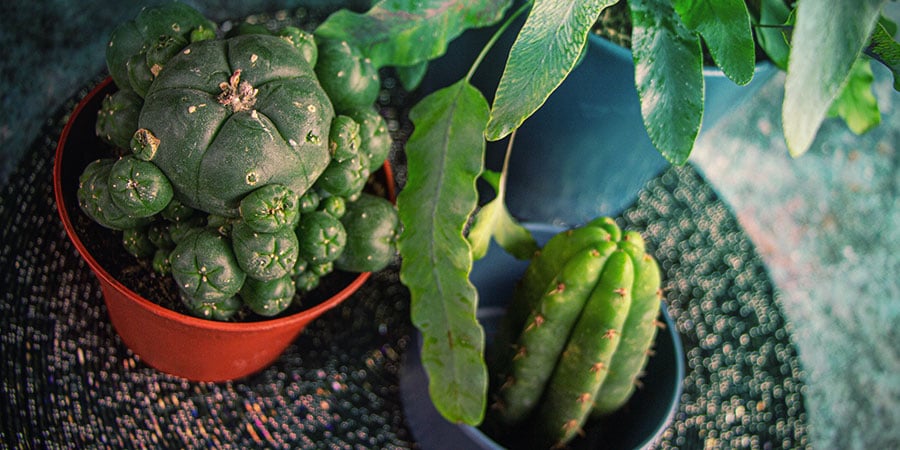
Growing mescaline cacti from seed is a simple, rewarding activity that anyone can do as long as they have the supplies and the patience. It's not hard, but it does take time. Once you have a collection of baby cacti on hand, experiment with different types of soil, feed, and other variables to see what impact it has on the overall potency and effect when you're finally ready to harvest. It might take years, but you could learn how to fine-tune the psychedelic properties of your home-grown mescaline for a perfect trip!
-
 4 min
17 June 2025
Top 5 cactus care mistakes and how to correct them
Cacti are hardy and low-maintenance, but they still have specific needs. Overwatering, poor soil, and lack of light are just a few common cactus care mistakes that can cause problems. Learn how to...
4 min
17 June 2025
Top 5 cactus care mistakes and how to correct them
Cacti are hardy and low-maintenance, but they still have specific needs. Overwatering, poor soil, and lack of light are just a few common cactus care mistakes that can cause problems. Learn how to...
-
 6 min
12 March 2025
How to grow and care for the San Pedro cactus
Growing plants is a very satisfying endeavour—even more so when they make you trip! Here, we'll look at how to grow San Pedro—an iconic psychoactive cactus—from seeds and cuttings.
6 min
12 March 2025
How to grow and care for the San Pedro cactus
Growing plants is a very satisfying endeavour—even more so when they make you trip! Here, we'll look at how to grow San Pedro—an iconic psychoactive cactus—from seeds and cuttings.
-
 3 min
6 October 2018
Top 5 Mescaline Cacti
Mescaline occupies the esteemed podium of naturally occurring hallucinogens along with DMT and psilocybin. The alkaloid can be found in a variety of cactus species. Here are the top 5...
3 min
6 October 2018
Top 5 Mescaline Cacti
Mescaline occupies the esteemed podium of naturally occurring hallucinogens along with DMT and psilocybin. The alkaloid can be found in a variety of cactus species. Here are the top 5...









 United States
United States


